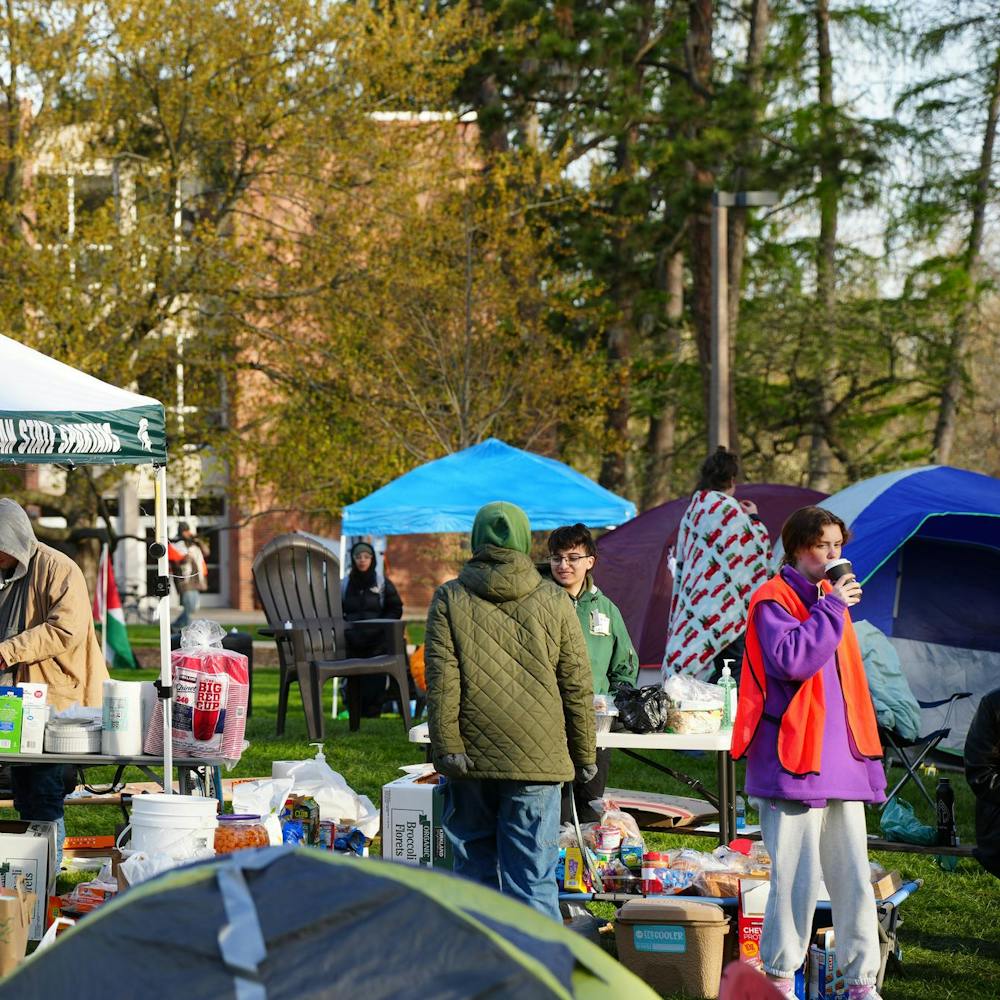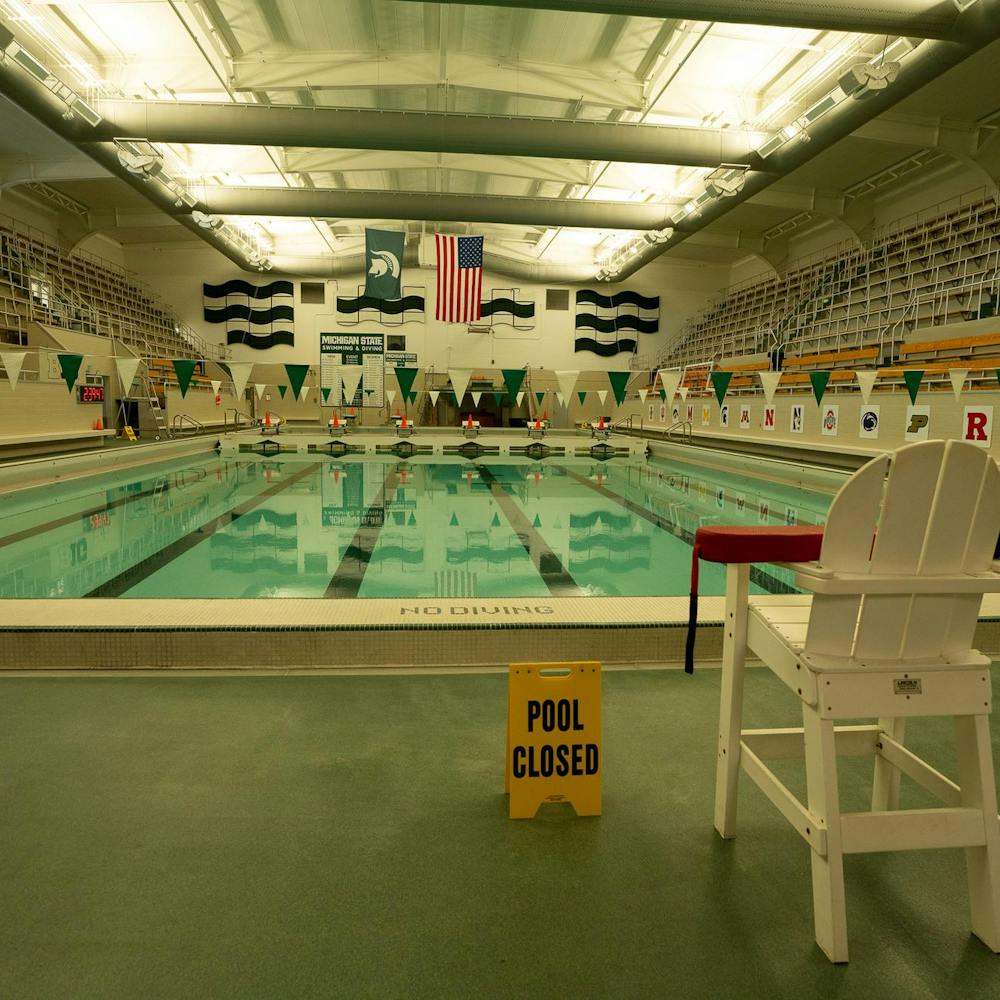As their green sides bubble and red brick crumbles, the original buildings in Spartan Village are now wrapped in chain-link fences waiting to be knocked down.
The demolition process of 34 buildings, or roughly 346 apartments, started Monday and will cost about $4 million, said Vennie Gore, MSU’s vice president of Housing & Food Services. The project has been in the works since May 2007.
The buildings, originally built in 1957 to house returning veterans from World War II, were only meant to be used for 35 years, Gore said.
“They have reached their useful life,” Gore said. “It costs more to repair it than to keep it going. So we made a decision that it’s time to remove it from the inventory.”
Intended as family homes to replace the temporary trailers and huts brought in immediately following the war, 1,536 apartments were built and quickly became part of the community. A school — Spartan Village Elementary — was even built on the site to help the families as they went to work or school. The school was closed in 2003 and turned into a community center in 2007.
“When my wife was offered a job at MSU, (the elementary school) was one of the things that sealed the deal,” said Mark Luebker, who led a parent group to save the school in 2002. “There was a lot of diversity and a tremendous principal. I remember saying this is the baklava of education. It was just so rich. There was so much to it. When we were coming from Purdue (University) to MSU that was what did it.”
Getting an update
The apartments that are a part of the demolition project also are in close proximity to the CSX Corp. railroad tracks, which makes them more difficult to rent to potential tenants, Gore said.
“Those were the buildings that were the oldest, and also the least desirable ones because they were right next to the railroad tracks, which could be disturbed most by the resonance of it,” Gore said. “We were getting to the point where our housing is very affordable so there was a group of students who would want to live there, but it became a maintenance issue. Things were breaking down, the plumbing, the roofing, the electrical. It just got to the point where we were addressing more than what we were getting out of it.”
Because of the age of the buildings, the university had to hire a team to remove any asbestos that was left in the structures before tearing them down.
“As part of the process we always hire what we call an environmental engineer group to look at the buildings,” Gore said. “The second part, if we do have asbestos — which we did because they were built in the ’50s — all that has to be abated by certified asbestos contractors and taken to the proper disposal.”
Asbestos, once used as a fire retardant in buildings, was ruled a hazardous material, and exposure to certain strains of the material can lead to cancer, according to the Centers for Disease Control and Prevention.
George Nyombaire, a food science doctoral student, used to live in one of the buildings set to be knocked down.
“The apartments are very old,” said Nyombaire, who has lived in the complex since 2004. “The bathrooms are very old, the lights are very old, everything is old. I think they are doing the right thing.”
Strategic planning
The demolition is scheduled to be completed near the end of August. The leftover space will act as a park-like setting for the apartment complex, Gore said.
“As we continue on through our strategic planning process we will determine what will be the use of that space. As we begin to look at our housing for the next 15 to 20 years, how we configure the family housing we have out there right now will be part of that,” Gore said.
In 2002, similar action was taken to demolish the 128 apartment units in Spartan Village for the same reasons.
However, the loss of revenue and cost to demolish the buildings was not a factor in the 5.25 percent rate increase for University Housing next year, Gore said.
“It was planned that we would take those (buildings) off the inventory, so it didn’t affect the budget. We’re raising rates because our expenses have gone up,” Gore said.
Support student media!
Please consider donating to The State News and help fund the future of journalism.
Rent in University Housing ranges from $665 to $814 per month, depending on the size of the apartment and if it’s been renovated.
Another adjustment
With construction comes closed roads and sidewalks, which has made getting around the apartment complex a hassle, some residents said.
“Especially when you are trying to go to Trowbridge (Road), and Goodrich’s (Shop-Rite) for shopping, so you have to go around,” Nyombaire said.
Matt Jones, a recently graduated law student, said bus service also has been an issue with construction.
“It’s tough not having a main line with the bus,” Jones said. “(Capital Area Transportation Authority) has been making an attempt, but it’s more of a timing issue. It takes longer to get places.”
To get around the detours, CATA must send in a shuttle bus to take residents to the larger busses that serve campus and the Lansing area.
“The shuttle runs more frequently, but it’s awkward at best when you lose that chunk of operating area,” said Dwight Smith, director of operations for CATA. “That type of thing is very expensive to us, if you think about it, it’s like putting a whole new route in there.”
CATA plans to return normal service immediately following the end of construction, Smith said.
Telecommunication, information studies and media junior Mike Lippett just moved into the complex, but said he hasn’t noticed too much of a problem getting around.
“Toward the outlet is a gate that’s cut off, and … there’s a street one way. So I guess when construction’s over with you can cut through instead of going around, but it’s probably not that much difference,” Lippett said.
Smith said he hopes the construction finishes soon.
“It’s an inconvenience for everyone,” he said.
Discussion
Share and discuss “Breakin' it down” on social media.






